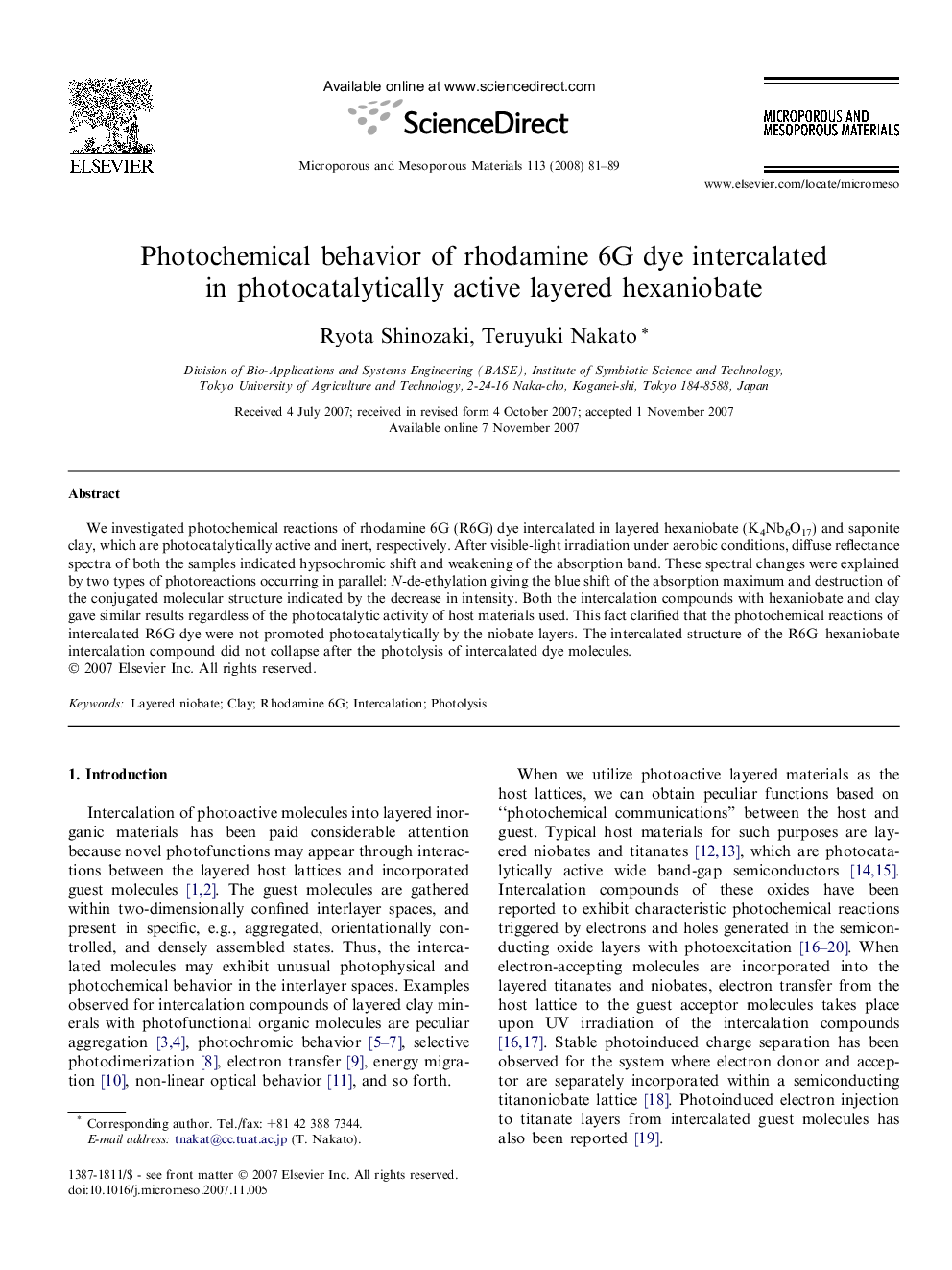| Article ID | Journal | Published Year | Pages | File Type |
|---|---|---|---|---|
| 76656 | Microporous and Mesoporous Materials | 2008 | 9 Pages |
We investigated photochemical reactions of rhodamine 6G (R6G) dye intercalated in layered hexaniobate (K4Nb6O17) and saponite clay, which are photocatalytically active and inert, respectively. After visible-light irradiation under aerobic conditions, diffuse reflectance spectra of both the samples indicated hypsochromic shift and weakening of the absorption band. These spectral changes were explained by two types of photoreactions occurring in parallel: N-de-ethylation giving the blue shift of the absorption maximum and destruction of the conjugated molecular structure indicated by the decrease in intensity. Both the intercalation compounds with hexaniobate and clay gave similar results regardless of the photocatalytic activity of host materials used. This fact clarified that the photochemical reactions of intercalated R6G dye were not promoted photocatalytically by the niobate layers. The intercalated structure of the R6G–hexaniobate intercalation compound did not collapse after the photolysis of intercalated dye molecules.
